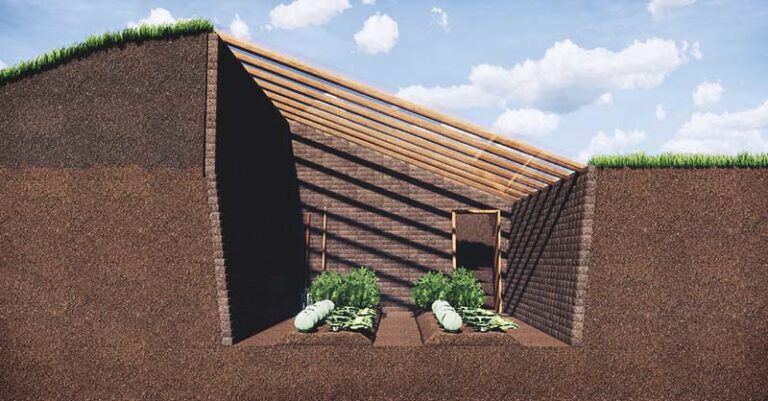Want to grow fresh food even when it’s freezing outside? An underground greenhouse—also known as a walipini—makes that possible. It uses the earth’s natural insulation to trap heat and create a stable growing environment, even in winter.
If you’ve got a little space and a big love for gardening, this DIY project could turn your backyard into a year-round harvest zone. Here’s how to get started.
What is an underground greenhouse?
An underground greenhouse is a sunken structure that uses the warmth of the earth and passive solar heating to maintain a consistent temperature. It’s typically dug 4 to 6 feet into the ground, with a transparent roof angled to the sun. It protects plants from frost, wind, and temperature swings.
Why build one?
-
Lets you grow fresh produce all year, even in cold climates
-
Uses less energy than heated greenhouses
-
Protects crops from harsh weather and pests
-
Cuts down on grocery bills
-
Built right, it can last for decades
Where to build it
Choose a spot with full sun exposure—ideally facing north-south to catch maximum light in winter. A natural slope or hillside makes the digging easier, but you can also build it on flat ground.
Basic design elements
-
Depth: Dig down about 6 feet or more, depending on your climate
-
Roof angle: Use a slanted roof made from clear plastic, polycarbonate, or greenhouse film
-
Back wall: Can be packed earth, stone, or insulated to reflect heat back inside
-
Front wall: Should be low to allow maximum sunlight through the angled roof
-
Ventilation: Add vents or a solar fan to control humidity and prevent overheating on sunny days
-
Drainage: Make sure the base has a slight slope and gravel or drain pipe to prevent flooding
Materials you’ll need
-
Shovels or digging equipment
-
Lumber or masonry for framing
-
Clear polycarbonate or greenhouse plastic
-
Rebar or supports for the roof structure
-
Insulation (optional, for colder regions)
-
Vents or windows for airflow
-
Gravel or sand for the base
Tips for success
-
If your soil is heavy or clay, reinforce the walls to prevent collapse
-
Use thermal mass (like barrels of water or bricks) to absorb and release heat at night
-
Add raised beds for easier access and better drainage
-
Watch for moisture buildup—ventilation is key
-
You can plant in-ground or use containers depending on your setup
What you can grow year-round
Cool-season greens like spinach, lettuce, kale, and Swiss chard thrive in underground greenhouses. Root veggies like carrots and beets also do well. In spring and summer, you can grow everything from tomatoes and peppers to herbs and melons.
An underground greenhouse gives you total control over your growing space, no matter the weather outside. It takes some effort to build, but once it’s set up, the payoff is huge. Fresh food in January? Yes, please.
